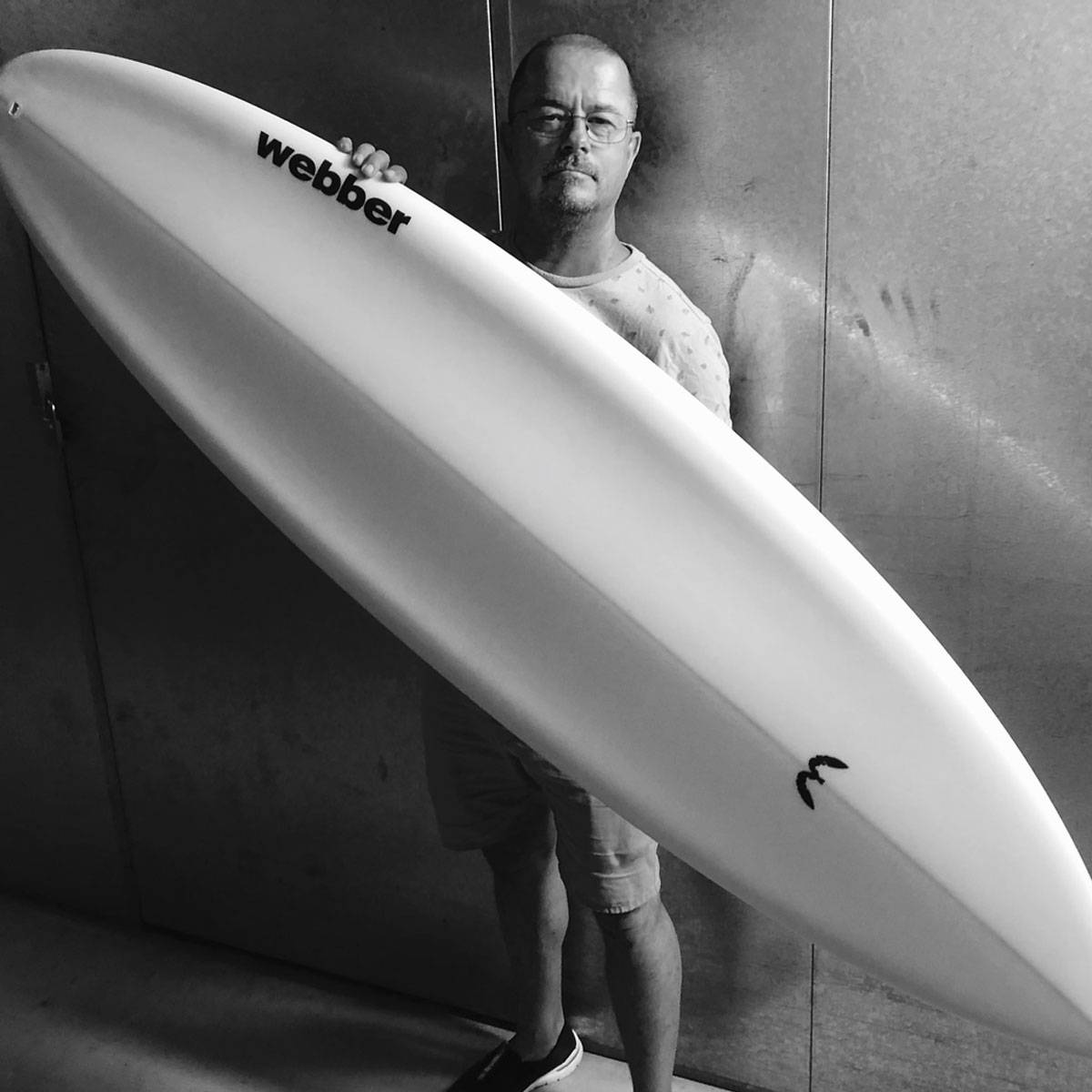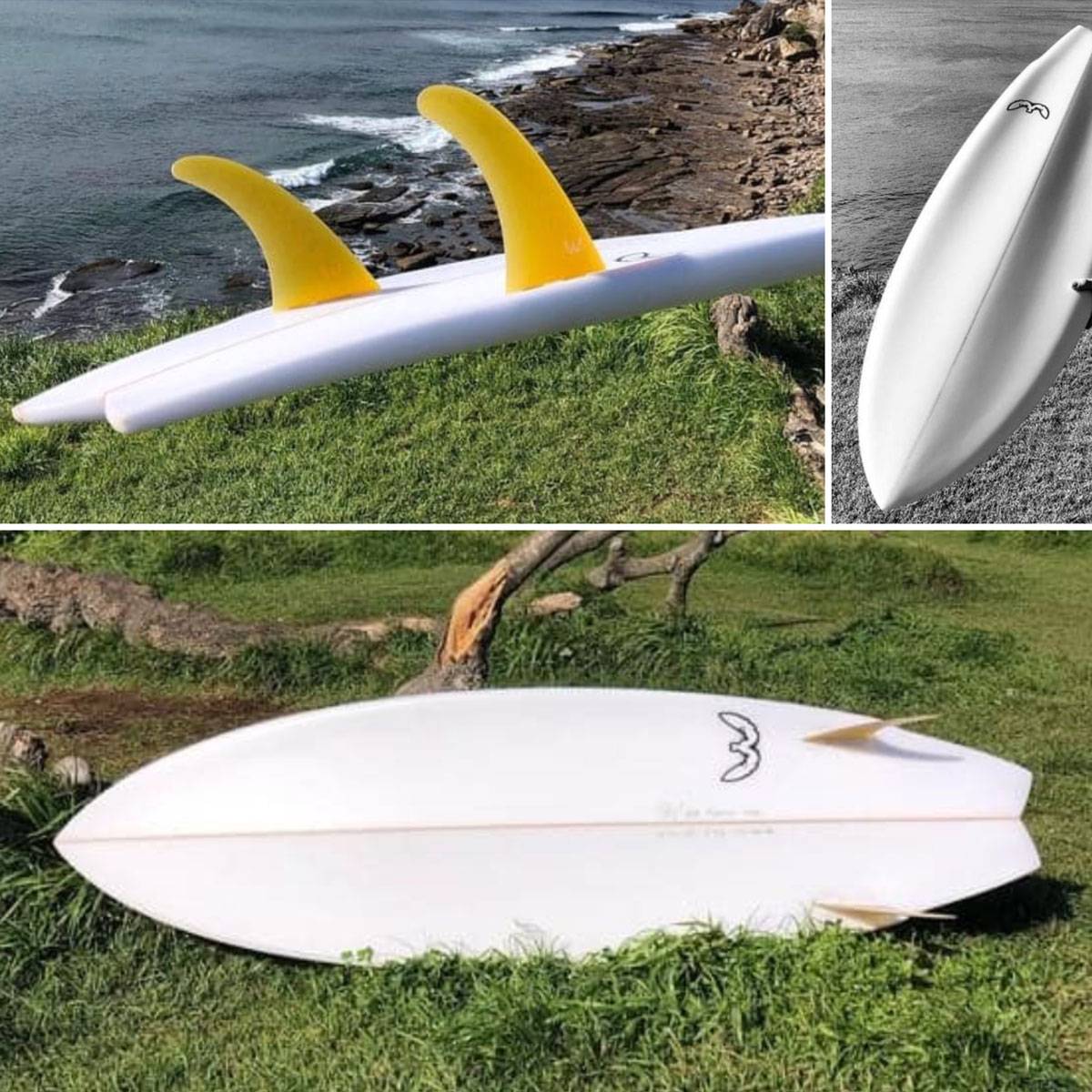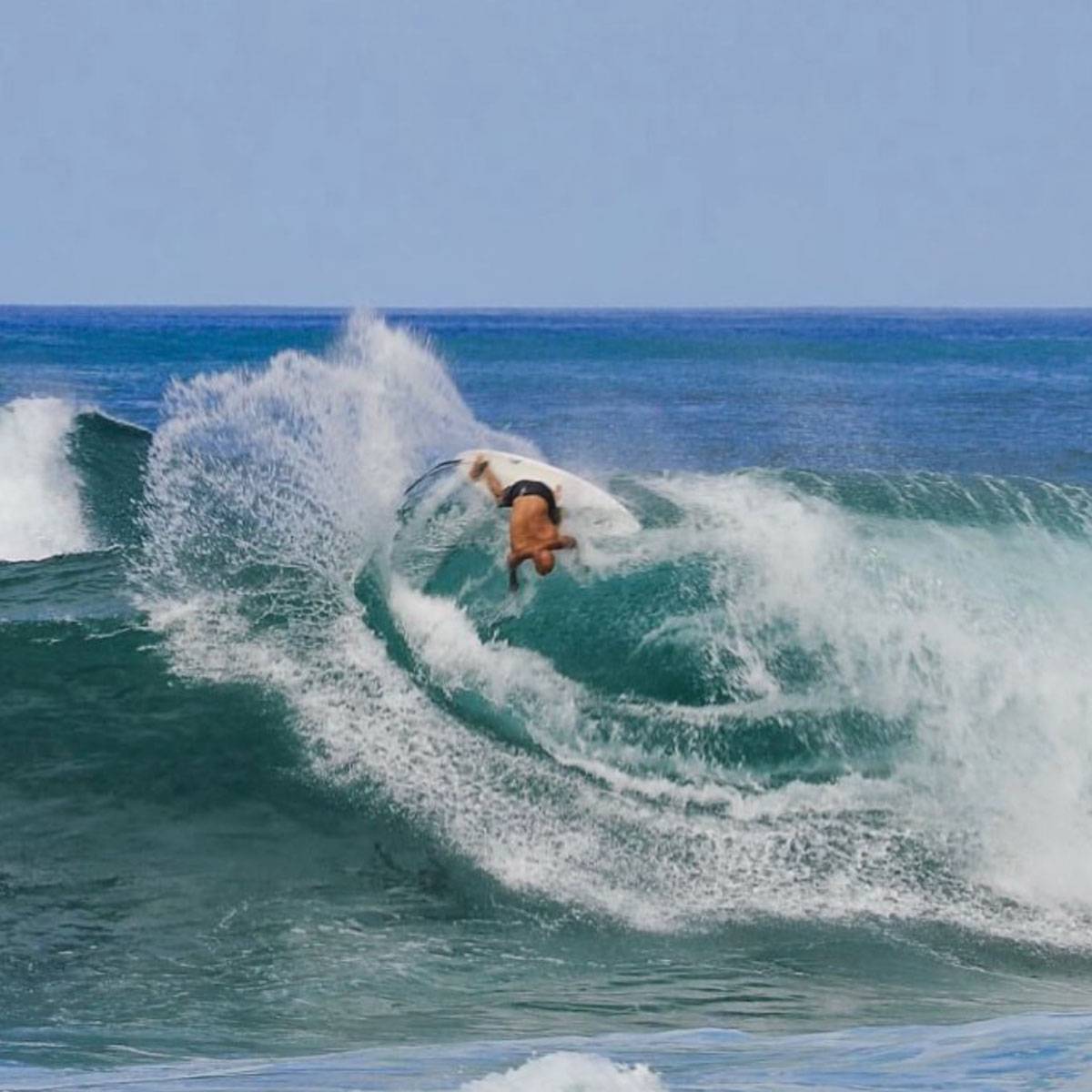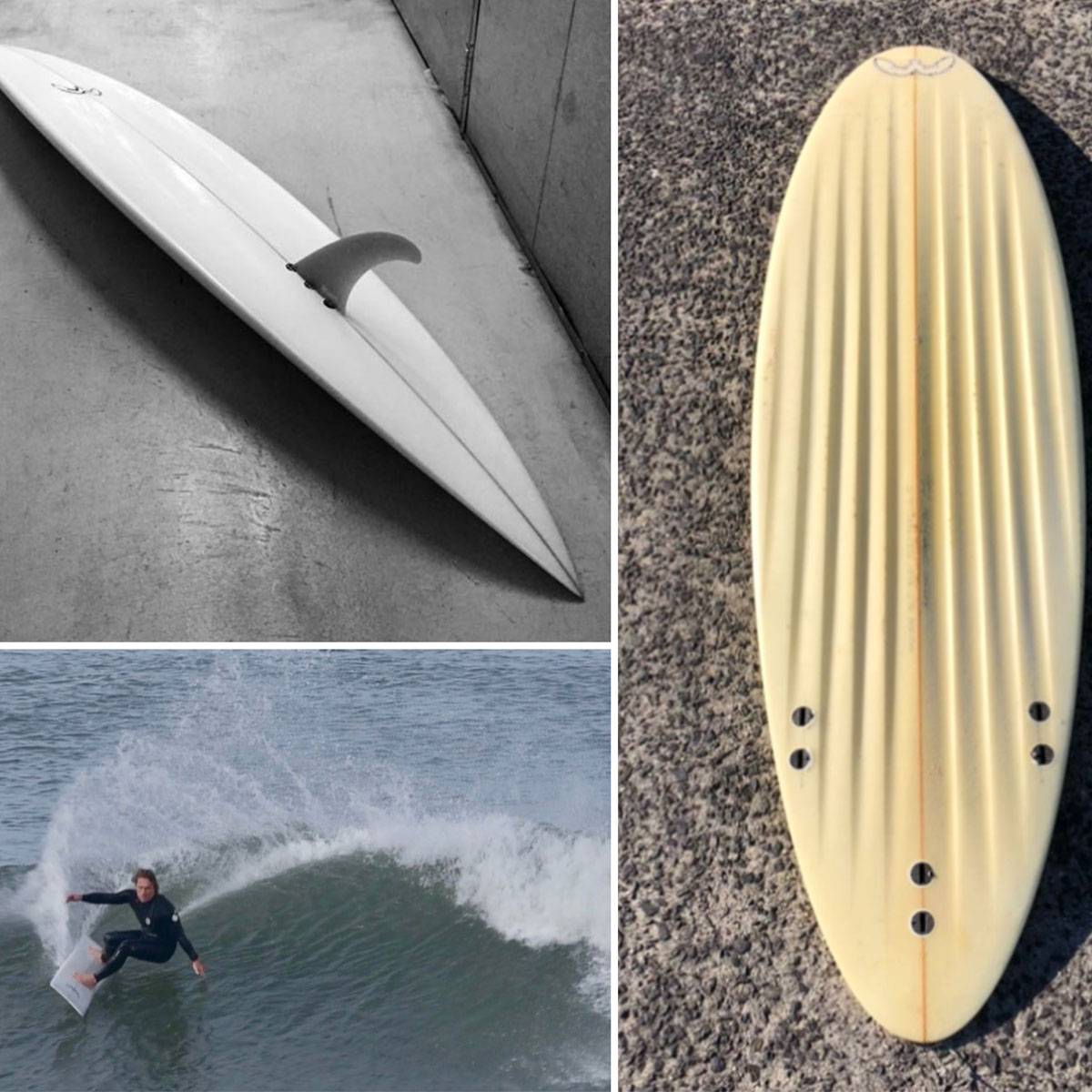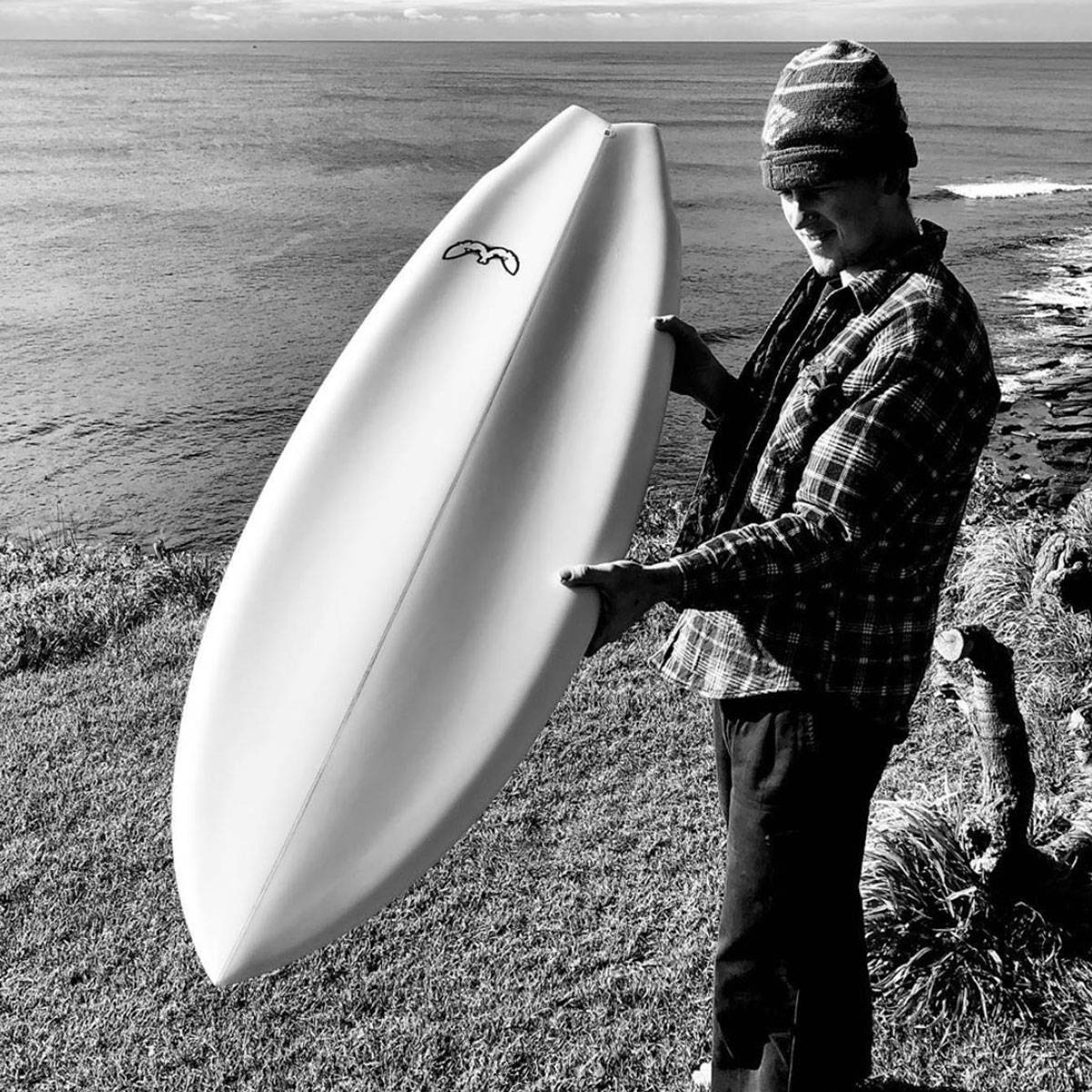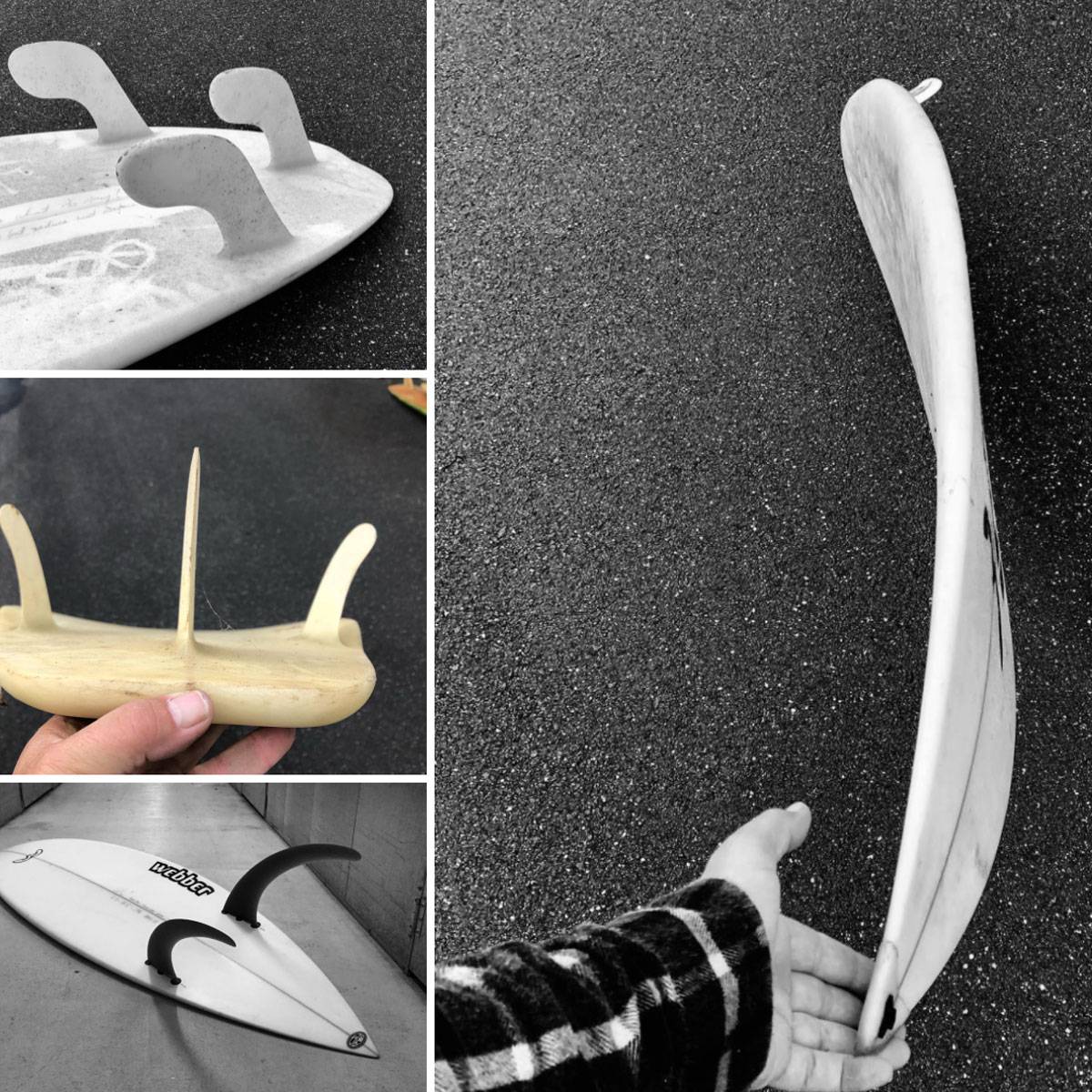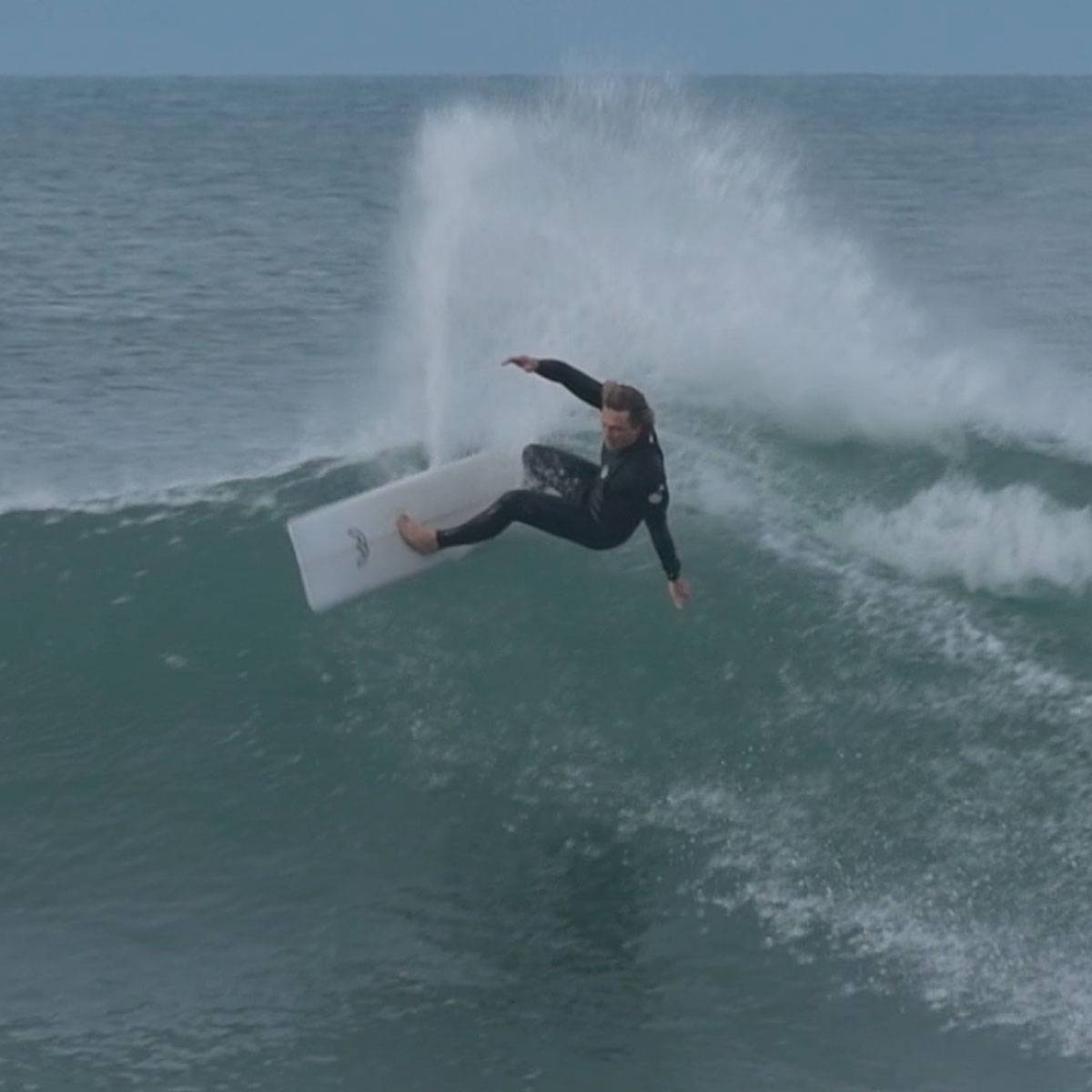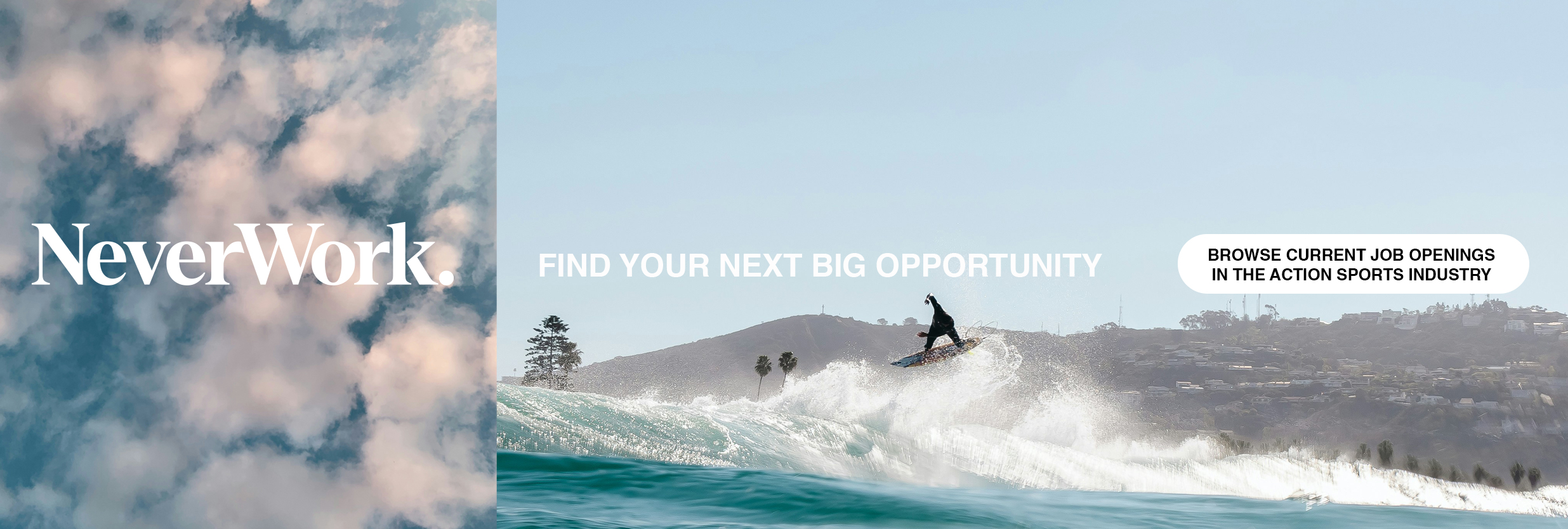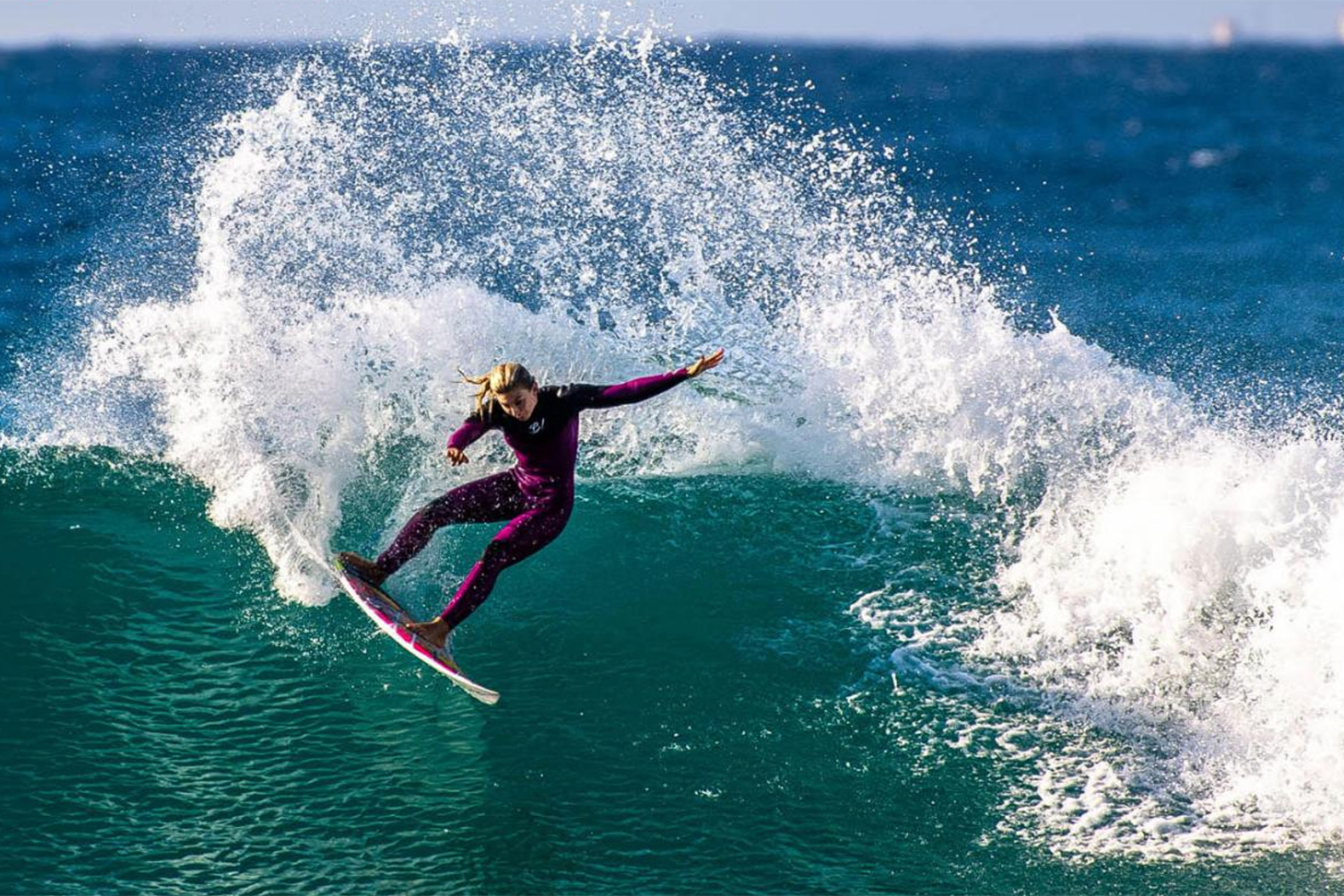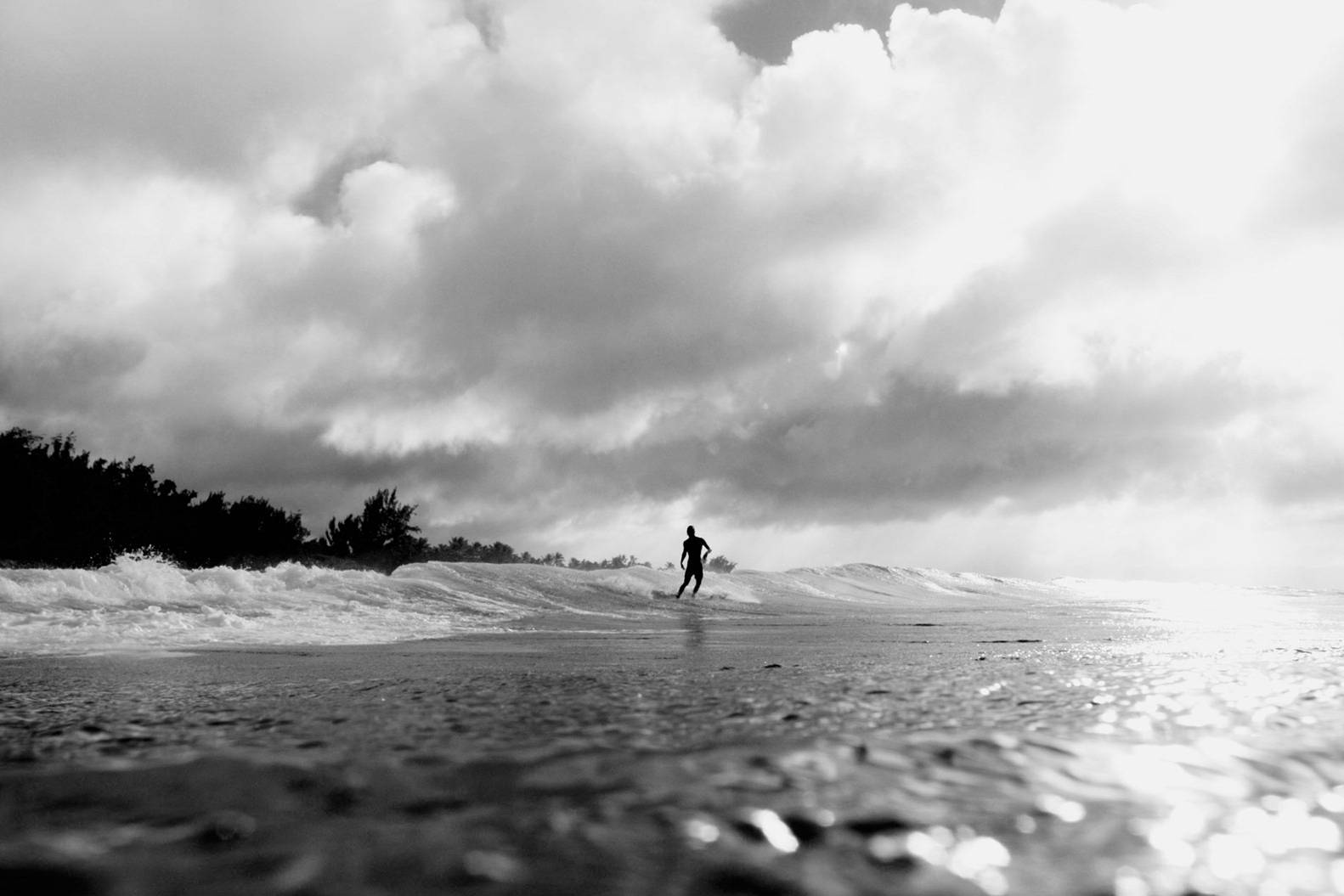A Greg Webber Interview
"Kelly came very close to working it out"
We had a quick chat with Greg Webber, one of the most important and innovative shapers we’ve had in recent memory (if not most of surfboard history), about Shane Herring, Kelly Slater, the ocean as inspiration and what does the perfect surfboard look like.
GREG WEBBER
Empire Ave: I could sit here and ask boring q’s like who are you, what do you do and how old are you. But I’d prefer to ask something like…
My first board, that I owned, was an Insight shaped by you with a big ass I.T.N on it. A 5’10 with a textured deck. What’s I.T.N?
Greg Webber: So classic, that’s a great first board to have! So yes ITN stands for In The Nude as you know, but of course it has to be asked. I guess it’s all about Bondi guys wanting to be Bondi guys. And with a bit of a radical history then the current young surfers at that time obviously thought they had to be a bit wild And they definitely were.
EA: The Webber family has been in and around the surf/surfboard industry for as long as I can remember. What’s the background that lead you all to be so heavily involved? From you, to monty, to Will….
GW: I guess the prime aspect of it was just the fact that the house we lived in was all about making things, lots of things, and It being totally varied. We had a pretty amazing tool shed and dad made it easy for us to get into surfboard making by not only providing the tools but also allowing us to modify an outside hallway between the bedrooms on one side and the sheds on the other side. And that modification was two plastic partitions, mounted to the walls, that we would unroll and then connect between the two walls, which then pretty effectively stopped the dust from drifting out the backyard onto the washing or into the main area of the house.
And then of course mum being an artist added that free form element so that we had the creative side all around us, and the tools to make whatever we wanted. And I hope you can notice that I didn’t say the creative freedom and the opportunity to “express ourselves“. Because that’s not really what you do when your kids you’re not thinking In anyway at all about the doing of it, like “OMG I’m expressing myself!” It’s far healthier mentally just to make stuff and not get all fancy about the doing of it.
GW: Oh yeah and dad did a whole lot of steel sculptures, so that was another influence seeing how varied art could be. And one really cool thing was watching one of his steel frame sculptures get dragged off the ground over time. So he welded the thing and then lent up against the main tree in the middle of the backyard, which was a pine, and over time as the tree grew and the sculpture rusted at its base, the it gradually got lifted up into the air probably 10 feet off the ground leaving the top of it about 25 feet in the air. It took 20 years for this to happen. So art and nature and time were intermingled with the result. So in a way that was also a bonus that we could see that art was was great and all, but not something that we had to revere too importantly. Although one time we did push the limits, when John was chasing me and threw a ping-pong bat at me but it bounced off the ground off the round top edge Of the bat and flew straight into an expensive painting and totally punctured it! We got into quite a bit of trouble with that.
EA: Give us your best Herring or Slater story (that you can share)
GW: The best Herring story was him absolutely annihilating South Avalon for his first surf on the banana. The worst experience with Shane was in Japan when I was asking him to sign 10 or 20 little cardboard autograph sheets and he was in such a spoiled mood with being a champion that he went “no I couldn’t be fucked“ and threw the marker pen at me, which hit the wall and left a little black mark, which was no big issue, but it sure signified a change in his thinking.

SURFBOARDS
Empire Ave: What does the perfect surfboard look like?
Greg Webber: I’m not sure. I could crap on about the geometric relationship between plan shape and rocker but not even Al Merrick understood it when I described it to him over 25 years ago. Although Kelly came very close to working it out all by himself after looking at one of my banana boards that he was riding.
EA: Is speed or control more important in a board?
GW: That depends on the level of the surfer, the better the surfer the more the balance swings towards speed, since they can put up with a tiny bit less control since they have the skill to harness it. But there are different types of speed anyway. Smooth controllable speed like fourth gear in a 3 litre sedan is what the average guy enjoys, While flat out hyperdrive with super responsiveness like a formula one car is what the top level guys want but can only just deal with. And of course there’s a huge range within all the pros that are out there.
EA: What’s the concept behind the creature?
GW: The creature is about grip and getting your feet closer to the water. I should say your heels and toes closer to the water as you push hard on rail turns.
EA: What’s the concept behind the electra?
GW: Electra is actually a departure from my usual theme of keeping everything super smooth and connected. With the Electra I dropped the entry rocker and created a more flowing front 3/4, and then curled the back away to create effectively a tail rocker like a banana which I accentuated by using a stinger fairly high up and moved the fins up about 2”. The idea being to give the flow and control from the front part and yet allow radical exits from carve turns which then gives the scope to hit lips and rebound off the whitewash far more radically.
EA: Where do you pull the inspiration/thoughts for some of the designs you create?
GW: Just from being in the right mood. Oddly enough after doing all of these more radical designs I had this huge urge recently to make an incredibly smooth simple board. So I designed it and Adam Robbo and Jack Perry are gonna try it out. Calling it the UNI, short for the universal model. And bizarrely enough I’m actually super keen to shape the first one, even though it’s simple, it’s almost like the smooth lines will be kind of sexy to finish shape. You can imagine how hard it is to finish off a creature model with deep double concaves both sides, not fun at all!
EA: Last one, which is probably the most interesting one to me – which shaper/s do you look to for inspiration, or look up to?
GW: Well now it’s a bit hard for me to look to anyone else for inspiration since I’ve got the kind of mind that only needs the wave itself and shapes in nature as my inspiration, but I have huge respect for what Tom Blake did, in making those complex hollow timber boards back in the 1920s my god It’s nearly 100 years since he first arrived in Hawaii. I think he represents something that I can identify with, when you think about the contrast between Duke Kahanamoku and himself. There can be no cooler surfer than Duke, and he had the royalty and tradition and history that the white guy could just never claim, yet not only did Tom Blake surf many many times with Duke, but he decided to attempt to improve on the surfboard designs of the day and for me I think that’s a vital thing when two cultures overlap, that on one hand you can respect the older culture and the individual to the highest level but when it comes to an activity that is incredible fun, like surfing then there is no rule as to what you can do with the craft.
It’s not like Duke would have been saying “hey that’s uncool man you’ve got a ride the traditional board or you’re not gonna be my mate!“ What the fuck do you think that Duke was thinking? He would’ve been amped and excited to see this different technology applied to the flat old heavy chunks of timber that they were used to riding. So I think it highlights to me how in 1924 when tom arrived in Hawaii that progress was in itself cool, which does put perspective on some of the young guys today that are more about looking cool with some old piece of wood than the actual ride that it offers.
In my early years Terry Bishop was incredibly helpful when I was shaping a G and S Surfboards in the late 70s. He was a tough and fairly removed person who I knew to respect and expect nothing from, yet ironically from the way I treated him he chose to give me more input and assistance then I think he gave to any other Shaper working there at the time. So I guess that comes from my upbringing and the influence of my father to be nothing but respectful to the people that are older than you. Specially in a factory or a work site where real physical work is being done.
Of course Terry Fitzgerald had a big influence with his experimental designs and the first entry concave I rode was a terry shaped board for Rod Kirsop. And terry gave me the opportunity to make boards for pro surfers like Greg day who got into the top three on the world tour in the early 80’s.
And then Rod Dalberg obviously had a huge influence and was super generous to actually give me templates that were copies of his own templates, which is such a rare thing to do. Never complimented me once which was probably good. And in the mid eighties I have to thank Greg Loehr for the concave he shaped that I saw his team rider Bill Hartley tear Angourie to shreds on. That obviously steered me towards the banana just as much as Herring did. Even though the banana had probably 2 inches more rocker than Bill’s board.
TEAM
Empire Ave: You’ve, somewhat, got Adam Robertson as a team rider who I imagine provides quite a lot of detailed feedback on the boards. How did this relationship come about?
Greg Webber: Yes, Adam has been a godsend. On one hand he just says to me, “just make anything and I’ll ride it.” And so as a result he has probably surfed the broadest range of surfboards that anyone has ever ridden. But on the other hand not only is his feedback accurate and totally pertinent, but he also knows how to say it in a very polite way when the thing isn’t very rideable at all
EA: I chat to Robbo quite a bit about boards, and have learnt a lot from him. What are the biggest things you’ve learnt, or taken away, from working with him?
GW: Just that both the shaper and the surfer are being totally open to experiment on anything. I do the big jumps and he helps to refine. But don’t forget I have had other experiences with the full range of incredible surfers at the top level for about 40 years so although he is no doubt the biggest experimenter I’ve ever had the good fortune of working with, there were a few surfers along the way who were very accurate about their feedback.
Surfers like Barton Lynch and graham Ces Wilson were really good at pinpointing what they thought was happening in relation to an edge or fin placement or volume distribution. Kelly’s is pretty good too, although sometimes he suggests things that I know will steer the design in the wrong direction but I just have to do it anyway or he’ll get off me and not order a board for a year.
EA: Historically, do you get more usable feedback from someone like Adam (very knowledgeable with boards) or someone like Herring who is a once in a generation talent?
GW: I’ve kind of answered that question above, but yeah there’s no comparison in the level of feedback between the two guys that you just mentioned. However, despite the fact that Shane didn’t have the capacity to comment accurately on the subtle aspects of the board, he was very similar to Adam in the sense that when it came to the moment that he realised that he was not as good as Kelly and wanted a board that allowed him to do something that no one had ever done before, then he gave me free reign to do whatever I thought it would take to achieve that. And so he gave me the inspiration to create the banana, and as a result some of the best turns ever done were the result of that openness.
EA: If we can talk about Kelly. He’s one of the biggest nerds about board design getting around. Is it fascinating or frustrating working with him?
GW: Much more fun than frustrating. As I said above at times he will think that a certain change needs to happen, and I can understand why he thinks that’s what is needed, but there are usually three or more things that can have the same result, or a mix of all of them, and that balancing act takes decades of a SHAPING to understand. and it really doesn’t matter how amazing the sports person is if they don’t understand the vehicle or the tool at great depth.
Formula One racing is probably the prime example. It takes a large number of engineers to build a car of that sort and so it’s close to impossible for the driver to understand the subtleties of Flex in the frame of the car for example. So it becomes a matter of communication on one hand or finding a designer who is capable enough in that sport when using that equipment to be able to pick up on the fundamentals to a moderate degree while understanding the structures to the highest level. But what I respect about Kelly most other than his phenomenal surfing is his desire to understand boards to the highest level.

If you enjoyed the above interview with Greg Webber and would like to read, explore, more our of interviews we’ve listed three below we’ve found popular or you can find yourself on the interviews page here.
Interviews:
– Ronnie Blakey, WSL Commentator.
– Tom Purbrick, Global Design Director at Quiksilver
– Sam Coombes, Founder of TCSS

